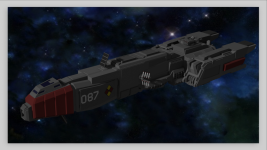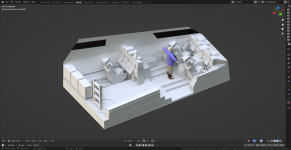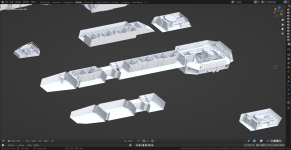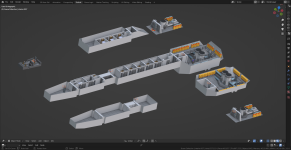Captain_Ahab
SOC-9
A thread to toss stuff stuff I'm tinkering with
unless otherwise noted, everything I post will be cc-0
Just to start, I'm building a ship, with interior, loosely based off the Gazelle
I need to figure stuff out some old homebrew crap to get some of the details right
I recall I did g-limits, hardpoints, computers and maybe some other stuff differently than MT
similar to something I did ages ago using a cc-0 asset set by greyoxide
the turrets are mine though

Bridge WIP for making deck plans
(yes, the interior fits completely inside the pictured hull)

unless otherwise noted, everything I post will be cc-0
Just to start, I'm building a ship, with interior, loosely based off the Gazelle
I need to figure stuff out some old homebrew crap to get some of the details right
I recall I did g-limits, hardpoints, computers and maybe some other stuff differently than MT
similar to something I did ages ago using a cc-0 asset set by greyoxide
the turrets are mine though

Bridge WIP for making deck plans
(yes, the interior fits completely inside the pictured hull)




